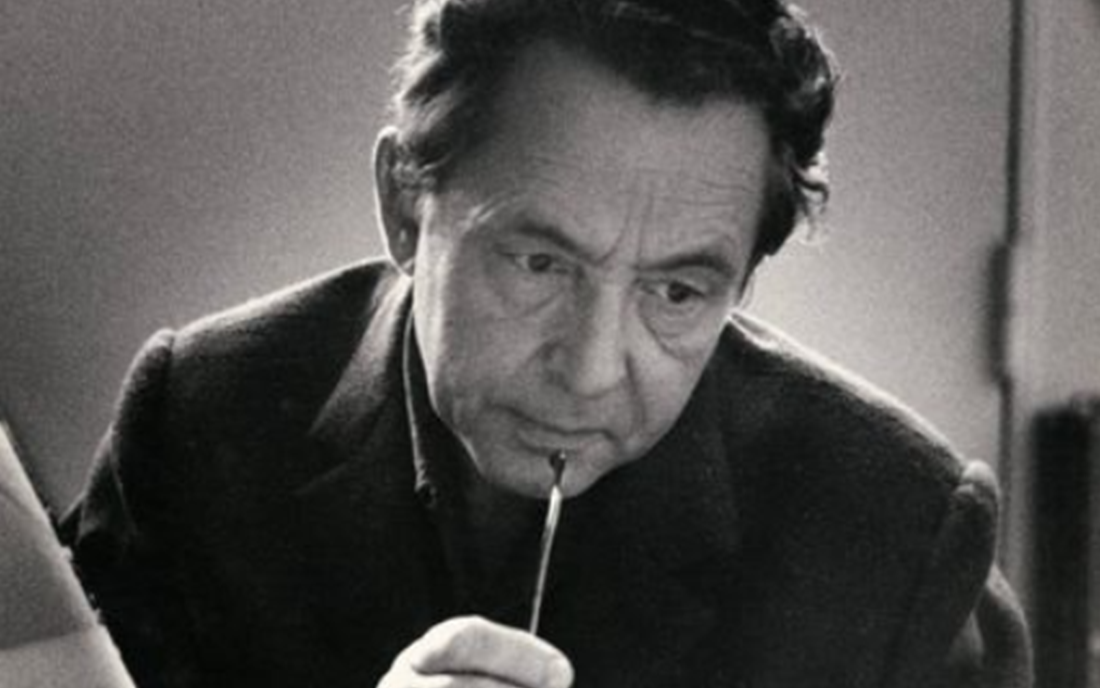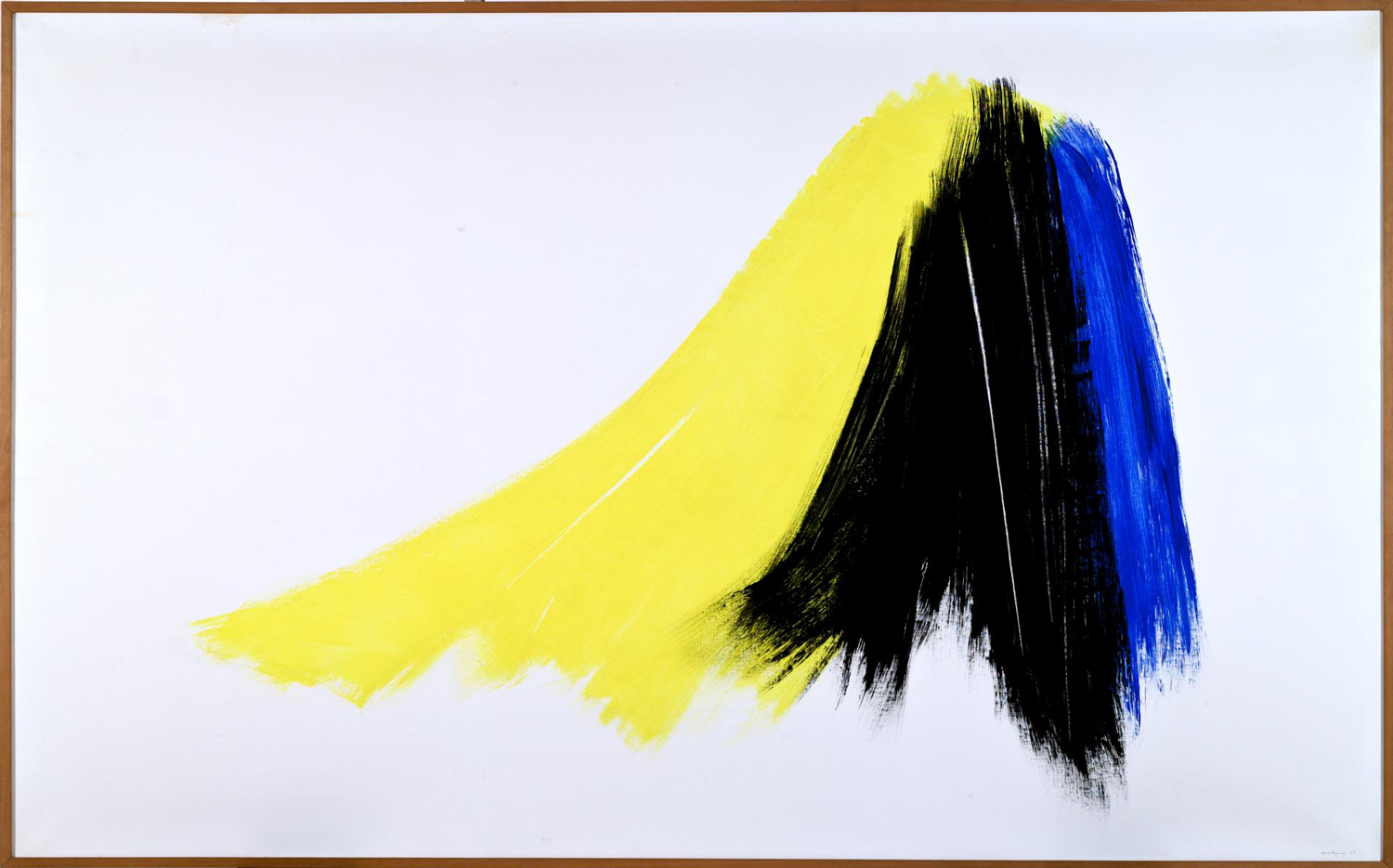In the post-1945 abstract art movement, the impulsive gesture of artists plays a central role. But is it also possible to reconcile the apparent contradictions of spontaneity and calculation in an abstract work of art? In this article, you will learn more about the unique creative process of the German-French painter Hans Hartung (1904–1989).

21 September 2024 marks the 120th anniversary of Hans Hartung’s birth. Even in his childhood, a significant impulse emerged that would later profoundly shape his artistic expression. As a primary school student, Hartung began painting abstract images in notebooks to overcome his fear of the natural force of lightning: “I wanted to trace its zigzag before it thundered – thereby capturing the lightning” (1). This early engagement with the fleeting nature of the moment influenced his technique: “They [lighting] gave me a sense of the speed of the stroke and the desire to capture the moment with the pen or brush. They taught me the urgency of spontaneity” (1).
Looking at Hartung’s oeuvre, one frequently encounters the quickly applied line work, which at first glance gives an impression of spontaneity. Yet Hartung’s description of the seemingly simple, vertical stroke reveals a carefully calculated approach to painting: “One must imagine that the canvas is vast. And it must be achieved in a single stroke. […] One needs a precise sense of direction. Then comes the moment when nothing must go wrong […]. Either you mess it up or you succeed.” (2), Hartung explained.

Hans Hartung, T 1971-H15, 1971 ©Courtesy of Tajan
Until the second half of the 1950s, Hartung followed a specific system in his work: he initially created a small ink drawing, which later served as the basis for an oil painting. Here, the calculated side of his art is evident. However, Hartung would later abandon this process and begin working directly on canvas using industrial paints.
A representative work from this phase is T 1971-H15, which is part of the Reinhard Ernst collection: Three swings of yellow, black, and blue meet in the upper right corner of the canvas, overlapping each other and forming a dome-like shape. As they move toward the bottom edge of the canvas, they spread out widely. The gestural brushstrokes appear powerful and swiftly executed, yet at the same time deliberate and controlled—no splashes, no running paint.
We can say that Hans Hartung succeeded in uniting the spontaneous and the calculated in his works. While the speed and directness of his gestural painting suggest an impulsive approach, the precision and consideration with which he created his works testify to a thorough engagement with form and technique. The tension between both the impulse and the premeditated thus shape the artist’s extraordinary visual language.
(1) ARTE (2019): Hans Hartung – Malen so schnell wie der Blitz (Hans Hartung – Painting as fast as lightning), Min. 01:53-02:10.
(2) ARTE (2019): Hans Hartung – Malen so schnell wie der Blitz (Hans Hartung – Painting as fast as lightning), Min. 39:42-40:29.
Photo: Monti, Paolo. [Hans Hartung alla Galleria Lorenzelli]. N.p., 1959.